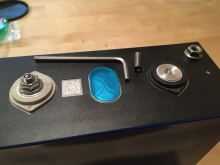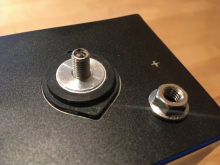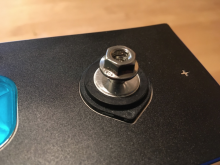Yeah for sure, hope it works out perfectly for you.
Yeah you could leave the tang there no problem (as they can be a real pain to break off when at the bottom against the thread hole) as long as it doesn't interfere with your bolt seating all the way. If you want, you can thread on the bolt without the bus bars, all the way down to where it touches the tang, and see if the bolt is down far enough (at least going down slightly farther than the thickness of the bus bars), and then you know you're good. If it did bottom out too soon (where you can't get enough clamping against the bus bars), you could use a Dremel tool with a carbide disc and just barely shave a little length off the tip of the bolt, just enough so you know it isn't bottoming against the tang once you've tightened it all down with the bus bars in place. And of course, be super careful not to over tighten.
And like Hedges is saying other option is to just thread it to the next size larger (however, if you care about aesthetics at all, the bolt will be a different size than the rest and look different in case that mattered to you). If you're taking the bus bars off and on a lot, the Helicoil will be stronger metal and not wear out with bolt threads going in and out a lot.
Also the advice to change over to studs is a good tip if you could do it, because it lowers the chance of damaging the threads by far, when there is only a pulling force on a stud, and not a pulling force combined with a friction force against a moving thread on a soft metal. My new cells I bought from a supplier in Colorado, he sent all the cells with studs installed, and I am really happy about that. Also, studs will make it so the length isn't critical.
When we used to build our race cars, we always put in studs on the main bearing caps, and to replace the head bolts with studs, as we could use a higher strength stud, and clamp them down to a higher torque and get much better holding on a high horsepower motor... Plus it's not beating on the block threads constantly as we would be pulling the engines apart all the time since the studs just stay in after install.
Anyways, good luck on it...








